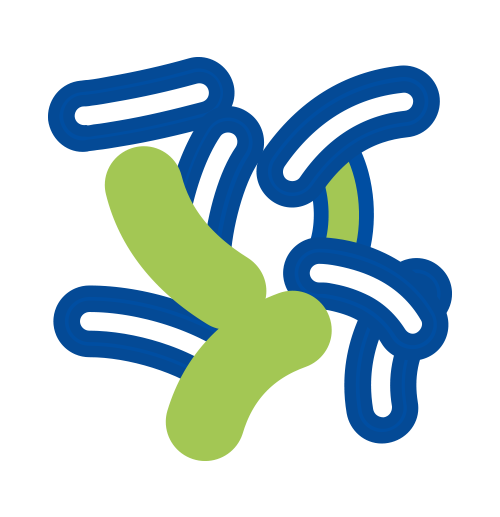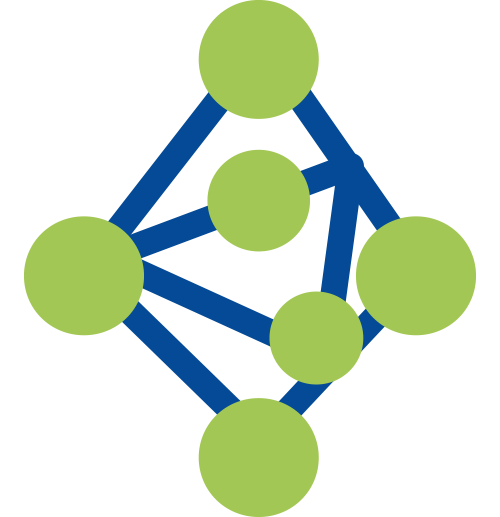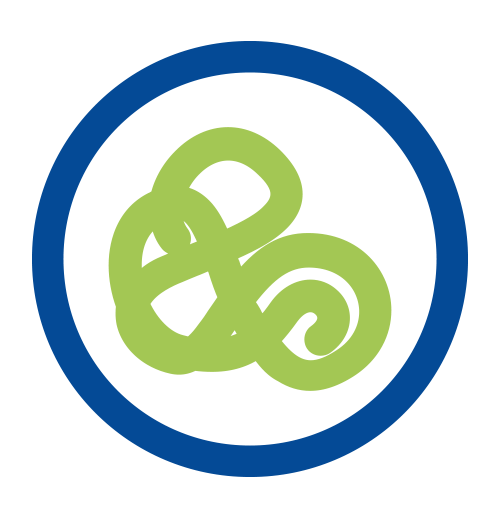The synthetic biology field is experiencing unprecedented acceleration driven by advances in high-throughput oligonucleotide pool synthesis. Oligonucleotide pools—collections containing thousands to millions of unique DNA sequences synthesized in parallel—have fundamentally transformed gene assembly workflows, enabling researchers to construct complex genetic systems at scales and costs previously unattainable. This transformation impacts multiple critical applications: metabolic pathway engineering, protein variant library construction, CRISPR-based genome editing, and synthetic circuit design. Understanding how oligo pools integrate with modern assembly methodologies provides molecular biologists and synthetic biology researchers with essential knowledge for advancing their experimental capabilities.
Oligo Pool Technology Foundations
Custom oligonucleotide pool synthesis represents a paradigm shift from traditional gene synthesis approaches. Where conventional methods synthesize individual sequences independently—limiting throughput and dramatically increasing costs—array-based oligo pool platforms synthesize thousands to millions of unique sequences simultaneously on solid surfaces. Dynegene's oligo pool synthesis platform leverages proprietary high-throughput DNA synthesis technology to produce pools containing up to 4.35 million distinct oligonucleotides with lengths reaching 350 bases.
The economic impact proves transformative: while individual gene synthesis costs typically range from $0.35-0.50 per base pair, oligo pool-based approaches reduce costs by 10-100 fold depending on library complexity. For protein engineering applications requiring synthesis of 500-1,000 gene variants, this translates to cost reductions from $50,000-100,000 to $5,000-10,000—making previously prohibitive large-scale experiments economically feasible.
Quality specifications constitute critical performance parameters. Modern oligo pool synthesis achieves sequence accuracy exceeding 99%, with error rates typically between 1 error per 1,000-5,000 synthesized bases. This fidelity level proves essential for downstream applications, as synthesis errors propagate through assembly reactions and can generate non-functional protein variants. Next-generation sequencing verification ensures pool composition matches design specifications before proceeding to assembly steps.
Gene Assembly Methodologies
Gibson Assembly for Seamless Gene Construction
Gibson Assembly has emerged as the predominant method for assembling gene fragments from oligo pools into full-length constructs. The isothermal, single-reaction format operates at constant 50°C, employing three enzymatic activities working synergistically: T5 exonuclease generates 3' single-stranded overhangs from blunt or near-blunt PCR products, high-fidelity DNA polymerase fills gaps in annealed fragments, and thermostable DNA ligase seals remaining nicks to produce covalently closed constructs.
The methodology excels in multiplexed fragment assembly, demonstrating proven capacity for joining 8-15 fragments simultaneously in standard reactions. Recent synthetic biology applications have successfully assembled 25+ fragments under optimized conditions. Assembly success rates of 85-95% are consistently achieved for 4-8 fragment assemblies when overlap design adheres to established specifications: 20-40 base pair overlap lengths with melting temperatures exceeding 52°C, GC content between 40-60% within overlap regions, and avoidance of secondary structures with folding free energies below -3 kcal/mol.
Practical implementation for oligo pool-derived fragments follows a standardized workflow: oligonucleotides are amplified via PCR using primers that incorporate the required overlap sequences, amplification products undergo gel purification or magnetic bead cleanup to remove primers and byproducts, purified fragments are quantified and mixed in equimolar ratios (typically 0.02-0.2 pmol per fragment), and the mixture is combined with Gibson Assembly master mix for 40-60 minute incubation at 50°C.
Golden Gate Assembly for Hierarchical Construction
Golden Gate Assembly utilizes Type IIS restriction endonucleases (BsaI, BsmBI, BbsI, Esp3I) that cleave DNA outside their recognition sequences, generating user-defined 4-base sticky ends enabling directional, scarless assembly. The defining advantage for oligo pool applications involves simultaneous digestion and ligation in unified reaction vessels, permitting highly multiplexed assemblies. Recent methodological advances demonstrate successful assembly of libraries containing hundreds of gene variants with assembly accuracy exceeding 94%.
The OMEGA platform (Oligo-based Multiplexed Efficient Gene Assembly) exemplifies Golden Gate optimization for synthetic biology. OMEGA employs Data-optimized Assembly Design (DAD) algorithms to computationally select optimal overhang combinations from the 256 possible 4-nucleotide sequences, maximizing assembly fidelity by avoiding overhang pairs prone to mis-ligation based on thermodynamic modeling and experimental validation datasets. This approach successfully assembled a library of 810 fluorescent protein variants with >94% sequence recovery, demonstrating robust performance at scales relevant for protein engineering applications.
Hierarchical assembly strategies prove particularly valuable for complex synthetic biology constructs. Level 0 assembly combines basic genetic parts (promoters, ribosome binding sites, coding sequences, terminators) using one set of overhangs. Level 1 assembly joins multiple Level 0 transcriptional units into operons or pathways using orthogonal overhangs. Level 2 assembly further combines Level 1 constructs into multi-gene metabolic pathways or synthetic chromosomes. This modular approach enables systematic construction of genetic systems with dozens of components while maintaining high assembly fidelity at each hierarchical level.
Codon Optimization Integration
Codon optimization represents a critical consideration when designing gene sequences for synthesis from oligo pools. Heterologous protein expression frequently encounters limitations when native gene sequences contain codon usage patterns mismatched to the expression host organism. Optimization algorithms redesign coding sequences to match host tRNA abundance profiles while preserving amino acid sequences, typically achieving 5-100 fold improvements in expression levels depending on the degree of codon bias mismatch.
For synthetic biology applications involving variant library construction, codon optimization must balance expression efficiency with library diversity requirements. Degenerate codon strategies introduce controlled sequence variation at the nucleotide level while maintaining specific amino acid compositions. This approach proves particularly valuable for protein engineering where exploring sequence space around functional scaffolds requires sampling multiple codon options encoding the same amino acids. Implementation involves designing oligonucleotides with degenerate positions using IUPAC nucleotide codes (R=A/G, Y=C/T, M=A/C, K=G/T, S=G/C, W=A/T), enabling library compression while maintaining protein-level diversity.
Computational optimization tools including JCat, OPTIMIZER, ATGme, and TISIGNER enable systematic codon redesign considering multiple parameters: Codon Adaptation Index (CAI) values typically target >0.8 for well-characterized hosts, GC content normalization to species-typical ranges (50-55% for E. coli, 38-44% for S. cerevisiae, 50-60% for mammalian cells), elimination of restriction sites interfering with cloning operations, removal of cryptic regulatory elements including splice sites in eukaryotic systems, and optimization of translation initiation regions to enhance ribosome binding efficiency.
CRISPR Library Construction
CRISPR sgRNA libraries represent the largest application domain for oligo pool technology, enabling genome-scale functional genomics screens. Dynegene's CRISPR sgRNA library synthesis supports construction of pooled libraries targeting thousands of genes simultaneously, facilitating identification of genetic determinants underlying complex phenotypes including disease resistance, metabolic capabilities, and drug responses.
Library design considerations critically impact screening success. Effective sgRNA sequences require: target specificity with minimal off-target binding potential (assessed through genome-wide homology searches identifying sites with >2 mismatches outside the seed sequence), favorable GC content of 40-60% within the 20-nucleotide guide sequence, avoidance of polyT stretches (≥4 consecutive thymines) that terminate transcription from U6 promoters, and selection of guides targeting functional protein domains or regulatory regions to maximize phenotypic impact.
Assembly workflows for CRISPR libraries from oligo pools typically employ either Gibson Assembly or Golden Gate cloning to insert synthesized guide sequences into expression vectors. For Gibson Assembly approaches, oligonucleotides are designed with 20-40 base pair overlaps matching vector linearization sites, enabling direct assembly without intermediate subcloning steps. Golden Gate approaches utilize Type IIS enzyme sites flanking the sgRNA insertion region, permitting directional cloning with high efficiency. Both methodologies achieve library complexities exceeding 10,000 unique sgRNAs with representation biases typically below 10-fold between most and least abundant library members.
Protein Engineering Applications
Variant library construction for directed evolution and structure-function studies constitutes a major synthetic biology application leveraging oligo pool technology. Traditional approaches including error-prone PCR or DNA shuffling generate random mutations with limited control over sequence space sampling. Oligo pool-based methods enable rational library design where specific positions undergo targeted mutagenesis while maintaining other regions constant, dramatically improving the probability of identifying functional variants.
Saturation mutagenesis libraries exploring all possible amino acid substitutions at defined positions exemplify targeted diversity generation. For a protein containing 5 positions of interest, testing all 20 amino acids at each position requires synthesis of 20^5 = 3.2 million variants—economically prohibitive using traditional gene synthesis. Oligo pool approaches reduce costs by synthesizing degenerate oligonucleotides encoding multiple codon options at target positions, achieving library construction costs of $5,000-15,000 compared to >$500,000 for individual synthesis.
The PETase engineering case study demonstrates practical implementation: researchers constructed libraries of 10,000 enzyme variants targeting 15 positions implicated in plastic degradation activity. Oligo pools encoded degenerate codons at target positions, were amplified and assembled into expression vectors via Gibson Assembly, and underwent high-throughput screening identifying variants with 5-fold improved polyethylene terephthalate hydrolysis rates. The complete workflow from library design through hit validation required approximately 3 weeks and $8,000 in synthesis costs.
Metabolic Pathway Assembly
Synthetic metabolic pathway construction enables production of high-value compounds including pharmaceuticals, biofuels, and specialty chemicals through engineered microorganisms. Oligo pool-based approaches facilitate rapid iteration through pathway designs, testing combinations of enzymes, regulatory elements, and expression levels to optimize production titers.
Modular pathway design strategies decompose complex biosynthetic routes into discrete genetic modules that can be independently optimized and recombined. Each module typically contains a promoter, ribosome binding site, gene coding sequence, and terminator—components that can be varied systematically using libraries synthesized from oligo pools. For a 5-gene pathway with 3 variants per gene (different promoter strengths, enzyme orthologs, or codon optimizations), testing all combinations requires 3^5 = 243 pathway configurations. Oligo pool synthesis and Golden Gate assembly enable construction of complete combinatorial libraries in 2-3 weeks at costs below $10,000.
The artemisinic acid biosynthesis pathway illustrates industrial-scale application: a 12-gene pathway in Saccharomyces cerevisiae was constructed using 500 gene fragments covering variants with different regulatory elements. Hierarchical Golden Gate assembly combined pathway modules, followed by integration into yeast chromosomes. Testing 144 pathway configurations identified optimal expression balance increasing artemisinic acid titers 10-fold over initial designs. Pool-based synthesis reduced costs from approximately $50,000 to $5,000 compared to individual gene synthesis.
Synthetic Antibody Discovery
Antibody library construction for therapeutic development represents a specialized application where oligo pools enable generation of diverse immune repertoires for screening against target antigens. Dynegene's synthetic antibody library platform supports construction of libraries containing millions of unique antibody variants with diversity concentrated in complementarity-determining regions (CDRs) responsible for antigen binding.
Library design principles balance diversity generation with structural constraints maintaining antibody folding and stability. CDR3 regions typically undergo extensive diversification through incorporation of degenerate codons or synthesis of focused libraries targeting specific sequence motifs associated with favorable binding properties. CDR1 and CDR2 regions undergo more conservative diversification to maintain framework stability. Constant regions remain invariant, derived from high-expressing antibody scaffolds including trastuzumab or adalimumab frameworks.
Selection workflows typically employ phage display, yeast display, or mammalian cell display systems to identify antibody variants binding target antigens with desired affinity and specificity. High-throughput sequencing after selection rounds quantifies enrichment of specific sequences, enabling identification of consensus binding motifs and structure-activity relationships. Iterative rounds of library construction incorporating insights from sequencing data progressively refine antibody properties including affinity maturation, epitope targeting, and reduction of immunogenicity liabilities.
Quality Control Considerations
Library verification ensures assembled constructs match design specifications before proceeding to functional screening. Multiple complementary approaches provide comprehensive quality assessment.
Sequence fidelity verification employs targeted amplicon sequencing to assess the composition of assembled libraries. Representative samples (typically 100-1,000 clones from libraries of 10,000-100,000 members) undergo Sanger sequencing for qualitative assessment, while next-generation sequencing provides quantitative measurements of library diversity, coverage, and representation bias. High-quality libraries exhibit >90% sequence accuracy, >80% coverage of designed variants, and representation biases below 10-fold between most and least abundant members.
Functional screening validates that sequence-level quality translates to biological activity. For enzyme variant libraries, activity assays on random library subsets confirm that assembled genes express functional proteins at expected frequencies. For CRISPR libraries, editing efficiency measurements on pooled or arrayed samples verify that synthesized sgRNAs direct Cas9 nuclease activity with anticipated specificity and potency. Functional validation rates typically exceed 80% for well-designed libraries synthesized from high-quality oligo pools.
Integration with Automation
High-throughput workflows maximize efficiency when constructing large libraries from oligo pools. Automation platforms including liquid handling robots, colony picking systems, and integrated next-generation sequencing sample preparation instruments enable processing of 96-384 samples in parallel with minimal hands-on time.
Standardized protocols facilitate automation implementation. Microtiter plate-based formats enable parallel processing across entire libraries: PCR amplification of oligonucleotide subpools occurs simultaneously in 96-well or 384-well plates using multichannel pipettes or liquid handlers, assembly reactions are arrayed in plates with reaction volumes scaled to 10-20 microliters minimizing reagent costs, post-assembly transformation and plating utilize automated systems, and colony picking robots enable high-throughput isolation of individual clones for sequencing verification.
Future Directions
Emerging applications continue expanding oligo pool utility in synthetic biology. DNA data storage leverages extreme information density (10^19 bytes per cubic centimeter) and stability (preservation for millennia under appropriate conditions) to archive massive datasets. Encoding strategies convert digital information into DNA sequences using error-correcting codes enabling accurate retrieval despite synthesis and sequencing errors. Random access occurs through sequence-based indexing where specific data blocks are retrieved via PCR amplification with unique primer sequences.
Long oligonucleotide synthesis advances progressively increase maximum synthesizable lengths, currently reaching 230 bases with expansion to 300 bases anticipated by 2026. Longer oligos reduce the number of assembly steps required for full-length genes, simplifying workflows and improving overall efficiency. For 1,500 base pair genes, 230-base oligos require 8-10 fragments versus 15-20 fragments for 90-base oligos, substantially reducing assembly complexity and error accumulation.
Machine learning integration optimizes library design and data analysis. Computational models predict sgRNA activity, protein stability effects of mutations, and metabolic pathway performance based on sequence features, enabling prioritization of variants most likely to exhibit desired properties. This guided library design reduces screening burden by enriching libraries for functional variants rather than exploring sequence space randomly.
Key Insights
Oligonucleotide pool synthesis has fundamentally transformed synthetic biology by enabling construction of genetic systems at scales and costs previously unattainable. Modern oligo pool platforms synthesize millions of unique sequences in parallel with accuracy exceeding 99%, supporting diverse applications including gene assembly, CRISPR library construction, protein variant library generation, metabolic pathway engineering, and synthetic antibody discovery.
Gibson Assembly and Golden Gate methodologies provide complementary assembly approaches optimized for different synthetic biology applications. Gibson Assembly excels in seamless joining of 4-15 fragments with assembly efficiencies of 85-95%, ideal for metabolic pathway construction and moderate-complexity gene assemblies. Golden Gate Assembly demonstrates superior performance for highly multiplexed constructs and hierarchical assembly strategies, achieving >94% accuracy for libraries containing hundreds of variants through computational optimization of overhang sequences.
Cost reductions of 10-100 fold compared to traditional gene synthesis democratize access to large-scale synthetic biology experiments. Protein engineering projects requiring 500-1,000 gene variants decrease from $50,000-100,000 to $5,000-10,000, enabling previously prohibitive experiments exploring vast sequence-function landscapes. This economic transformation accelerates discovery timelines for therapeutic proteins, industrial enzymes, and novel biological functions.
Quality control and library verification remain essential for ensuring experimental success. High-throughput sequencing provides comprehensive assessment of library composition, identifying synthesis errors, assembly artifacts, and representation biases before proceeding to functional screens. Integration with automation platforms enables processing of thousands of constructs in parallel, maximizing experimental throughput while maintaining rigorous quality standards.
Continued technological advances in oligonucleotide synthesis, assembly methodologies, and computational design tools promise further acceleration of synthetic biology capabilities. Increasing maximum oligo lengths to 300+ bases, improving synthesis accuracy, and integrating machine learning for rational library design collectively enable construction of increasingly sophisticated genetic systems for applications spanning medicine, materials science, and sustainable biotechnology.
 NGSHybridization Capture DNA Probe QuarStar Human All Exon Probes 4.0 (Tumor) QuarStar Human All Exon Probes 4.0 (Standard) QuarStar Liquid Pan-Cancer Panel 3.0 QuarStar Pan-Cancer Lite Panel 3.0 QuarStar Pan-Cancer Fusion Panel 1.0 QuarStar Pan Cancer Panel 1.0 Hybridization Capture RNA Probe QuarXeq Human All Exon Probes 3.0 HRD panel Library Preparation DNA Library Preparation Kit Fragmentation Reagent mRNA Capture Kit rRNA Depletion Kit QuarPro Superfast T4 DNA Ligase Hybridization Capture QuarHyb Super DNA Reagent Kit QuarHyb DNA Plus 2 Reagent Kit QuarHyb DNA Reagent Kit Plus QuarHyb One Reagent Kit QuarHyb Super Reagent Kit Pro Dynegene Adapter Family Dynegene Blocker Family Multiplex PCR QuarMultiple BRCA Amplicon QuarMultiple PCR Capture Kit 2.0 PathoSeq 450 Pathogen Library Corollary Reagent Streptavidin magnetic beads Equipment and Software The iQuars50 NGS Prep System
NGSHybridization Capture DNA Probe QuarStar Human All Exon Probes 4.0 (Tumor) QuarStar Human All Exon Probes 4.0 (Standard) QuarStar Liquid Pan-Cancer Panel 3.0 QuarStar Pan-Cancer Lite Panel 3.0 QuarStar Pan-Cancer Fusion Panel 1.0 QuarStar Pan Cancer Panel 1.0 Hybridization Capture RNA Probe QuarXeq Human All Exon Probes 3.0 HRD panel Library Preparation DNA Library Preparation Kit Fragmentation Reagent mRNA Capture Kit rRNA Depletion Kit QuarPro Superfast T4 DNA Ligase Hybridization Capture QuarHyb Super DNA Reagent Kit QuarHyb DNA Plus 2 Reagent Kit QuarHyb DNA Reagent Kit Plus QuarHyb One Reagent Kit QuarHyb Super Reagent Kit Pro Dynegene Adapter Family Dynegene Blocker Family Multiplex PCR QuarMultiple BRCA Amplicon QuarMultiple PCR Capture Kit 2.0 PathoSeq 450 Pathogen Library Corollary Reagent Streptavidin magnetic beads Equipment and Software The iQuars50 NGS Prep System Primers and Probes
Primers and Probes RNA SynthesissgRNA miRNA siRNA
RNA SynthesissgRNA miRNA siRNA



 Gene Synthesis
Gene Synthesis Oligo Pools
Oligo Pools CRISPR sgRNA Library
CRISPR sgRNA Library Antibody Library
Antibody Library Variant Library
Variant Library


 Tel: 400-017-9077
Tel: 400-017-9077 Address: Floor 2, Building 5, No. 248 Guanghua Road, Minhang District, Shanghai
Address: Floor 2, Building 5, No. 248 Guanghua Road, Minhang District, Shanghai Email:
Email: Tel: 400-017-9077
Tel: 400-017-9077 Address: Floor 2, Building 5, No. 248 Guanghua Road, Minhang District, Shanghai
Address: Floor 2, Building 5, No. 248 Guanghua Road, Minhang District, Shanghai Email:
Email: 







